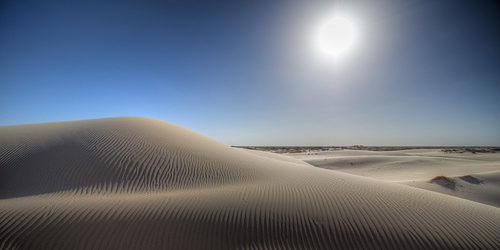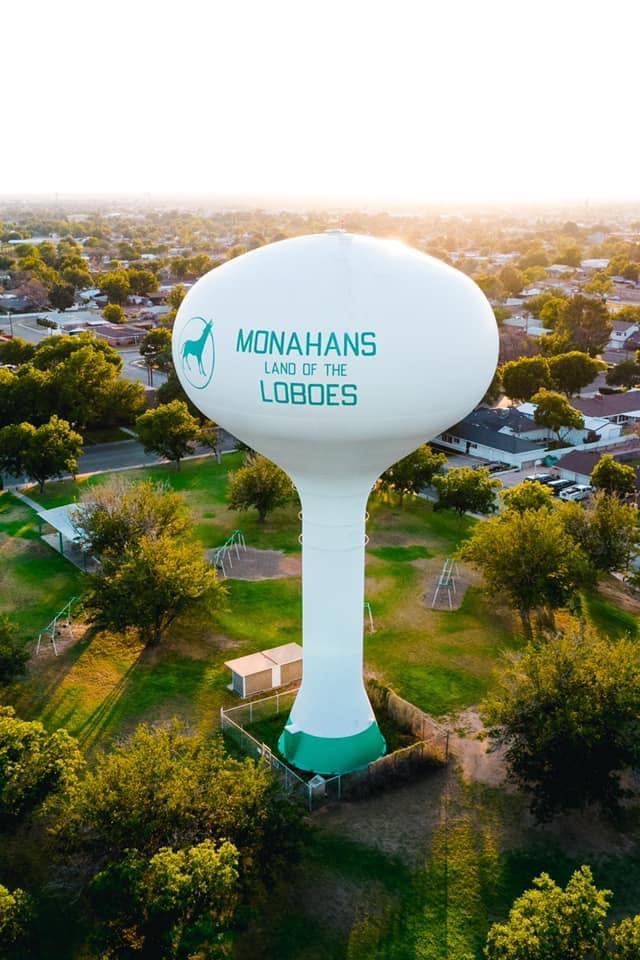
In1881, John Thomas Monahan dug the first well in the sand hills of West Texas, originally know as Monahan’s Well.
A few years later the town was known simply as Monahans, the Oasis of the West Texas desert.

The discovery of water at the site of present-day Monahans was a breakthrough.
According to an article in the Encyclopedia of the New West, written in 1881. “The Texas and Pacific Railroad found here its first inexhaustible supply of pure water.”
For the first time, it now becomes apparent that the “Monahans Well” may have had a very significant impact.
The Monahans Sandhills are part of the Permian Basin of hydrocarbon formations, and some oil production continues in and around the state park and Monahans Sandhills State Park is noted for the presence of sand dunes up to 70 feet high.
Although desert-like, the Monahans Sandhills are not a desert; they are a part of a semi-arid ecosystem (average annual rainfall 12.3 inches) characterized by the presence of both groundwater and relatively nutrient-poor windblown sand.

Much of the Monahans Sandhills are privately owned property. But the state of Texas operates a 99-year lease with the Sealy-Smith Foundation for the ranch on which most of the land of the state park is located.
The park opened to the public in 1957, and the state park has leasehold rights to this parcel of the sandhills until 2056.
Visitors are welcome and here and they enjoy several local forms of recreation at the Monahans Sandhills such as sandboarding, sand volleyball, sand surfing, and sand tobogganing.
After enjoying the Monahans Sandhills State Park, visitors often explore the city’s various historical museums.
Located at the Million Barrel, this 14.5- acre site is an engineering marvel. Built in 1928, the tank was designed to hold over a million barrels of crude oil and today provides a perfect performance venue for the 400-seat Meadows Amphitheater.
Also located at the Million Barrel historic site is the Ward County Museum complex which is a must-do for any history buff. The complex boasts a wide variety of historical artifacts including The Coca-Cola Museum, The Heritage Museum, the Railroad Museum, and The Pyote Bomber Base Museum!

The Coca-Cola Museum commemorates the Coca-Cola bottling plant and The Big Burger Restaurant.
This private collection donated to the museum by Dan & Elaine Wetzig and the Conrad Dunagan Family contains all kinds of Coca-Cola memorabilia and collectibles.
The Heritage Museum houses numerous antique collections of cameras, medical instruments, rifles, and shotguns dated back to the early ’20s, surveying equipment, oilfield equipment and a penny-farthing bicycle.
At the Railroad Museum see antiques from the Pyote Train Depot, the rail car and caboose, and the Southwestern Bell Telephone Company last “step” office in Texas.

The Pyote Bomber Base Museum showcases an important collection is a wonderful venue for WWII enthusiasts. Come visit our newest exhibit and learn about the Pyote Army Airfield, which trained B-17 and B-29 crews.
Once you’ve stepped back in time at the Ward County Complex, unwind with a visit to the Ward County Golf Course, an 18-hole course that features 6,669 yards of golf from the longest tees for a par of 72. The course rating is 69.9 and it has a slope rating of 115 on Bermuda grass. The golf course opened in 1934.
To connect with our partners in Monahans, please visit their website, Facebook page, or download their app- Monahans Proud available on Android & Apple.

